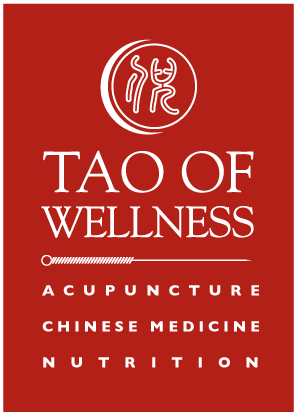Understanding and Healing SIBO: A Tao of Wellness Integrative Approach
What is SIBO?
Small Intestinal Bacterial Overgrowth (SIBO) is a condition characterized by an abnormal increase in the population of bacteria in the small intestine—where relatively few bacteria should reside. This overgrowth disrupts digestion, nutrient absorption, and the delicate balance of the gut ecosystem. I can be diagnosed either with a breath test detection of elevated levels of methane and hydrogen sulfate gases or by symptom pattern. It often results in chronic symptoms like bloating, gas, abdominal pain, diarrhea or constipation, brain fog, and fatigue.
Prevalence and Hidden Epidemic
Though underdiagnosed, SIBO is increasingly recognized as a root cause of chronic digestive issues. Studies estimate that up to 80% of patients with Irritable Bowel Syndrome (IBS) actually have SIBO. And countless others suffer from SIBO without being diagnosed or treated. Factors contributing to this rise include overuse of antibiotics, consumption of processed and low-fiber foods, chronic stress, and impaired gut motility—often stemming from vagus nerve suppression.
Common Causes of SIBO
Antibiotics disrupt the natural balance of gut flora, allowing opportunistic bacteria to overpopulate.
Processed foods lack the fiber and nutrients necessary for healthy digestion and microbiome diversity.
Chronic stress suppresses the parasympathetic nervous system and vagus nerve, which control peristalsis and gut rhythm.
Low stomach acid, often due to acid-reducing medications or aging, allows bacteria to survive transit to the small intestine.
Structural issues such as adhesions or motility disorders can cause stagnant flow and bacterial pooling.
Western Medical Treatment
Conventional treatment often involves a short course of targeted antibiotics such as Rifaximin (Xifaxin), sometimes combined with neomycin. While effective in the short term, relapse rates are high if the underlying conditions aren’t addressed.
Tao of Wellness SIBO Protocol: A 3-Phase Healing Journey
Our proprietary approach at Tao of Wellness blends Traditional Chinese Medicine (TCM) with evidence-based Western and nutritional therapies. We view SIBO not only as a bacterial issue but as a disruption of gut ecology and rhythm. Our three-phase protocol addresses root causes and supports long-term healing. We have successfully treated hundreds of patients with SIBO with a very low relapse rate.
PHASE 1:
Bacterial Elimination
and Gas Reduction
Goal: Target and reduce sulfur gas-producing bacterial overgrowth.
Botanical Antimicrobials: Our Wellness Living Berberine formula naturally reduces bacterial overgrowth while supporting insulin sensitivity and metabolism. Clinically, we use a more potent formulation with Coptidis and other antibacterial herbs.
Diet: To reduce fermentable sugars, follow a low-residue diet similar to FODMAP or the Specific Carbohydrate Diet (SCD). Temporarily avoid sulfur-rich foods (e.g., eggs, garlic, and cruciferous vegetables).
Acupuncture: Regular treatments focus on stimulating vagus nerve function, balancing the Liver-Spleen-Stomach axis, and reducing inflammation.
PHASE 2:
Gut Lining Healing
and Motility Restoration
Goal: Repair leaky gut, calm inflammation, and restore gut movement.
Herbal Therapy: TCM herbs like huang qi (astragalus), bai zhu (atractylodes), and dang shen (codonopsis)—in Digest Formula to tonify Spleen Qi and restore gut lining.
Nutritional Support: PhytoNzyme promotes better protein, fat, and carbohydrate digestion, decreasing and healing the inflamed intestinal lining. Our Wellness Living Omega Support blend of anti-inflammatory omega-3s helps soothe the gut lining.
Diet: Increase omega-rich and glutamine-containing foods to help with gut lining healing. Drink bone broth, which is rich in glutamine, which supports intestinal wall repair.
Acupuncture: Protocols target resetting the vagus nerve and harmonizing the digestive organs to improve peristalsis.
PHASE 3:
Microbiome Restoration
and Long-Term Maintenance
Goal: Repopulate the gut with beneficial microbes and maintain motility.
Pre and Probiotic Therapy: Prebiotic Fibers like acacia, slippery elm, aloe, ginger root, and inulin support beneficial flora. Our advanced Wellness Living Super Probiotics contain multi-strain, high-potency formulas for microbiome diversity.
Diet: Gradually reintroduce a whole-food diet rich in fiber, prebiotic-rich vegetables, polyphenols (berries, greens), resistant starches (green bananas, cooked and cooled rice), and fermented foods as tolerated.
Stress Reduction: Explore daily Chi Gong for the Earth Element (specific for digestive health), Meditation for Stress Release, and breath work, which are essential for stimulating the parasympathetic nervous system. Adaptogenic herbs like jujube seed, lily bulb, and polygala in the Calm Herbal Formula can be incorporated for stress resilience.
Acupuncture:
The Missing Link
TCM views the gut as part of an interconnected system regulated by the flow of Qi (life energy). The vagus nerve, which governs the “rest and digest” mode, can become dysfunctional due to chronic stress. Acupuncture is uniquely effective in reactivating vagal tone, restoring natural motility, and harmonizing the gut-brain axis. Specific points along the Conception, Stomach, and Liver meridians are used to bring balance and reset rhythm.
Final Thoughts
Healing SIBO is a journey—not a quick fix. The Tao of Wellness approach offers a sustainable roadmap to gut healing by honoring both modern science and ancient wisdom. By addressing microbial imbalances, gut integrity, and nervous system regulation, this protocol not only eliminates symptoms but transforms the gut into a resilient, harmonious ecosystem.
If you or someone you know is struggling with chronic digestive issues, we invite you to contact Tao of Wellness for a personalized plan and begin your healing journey today.
